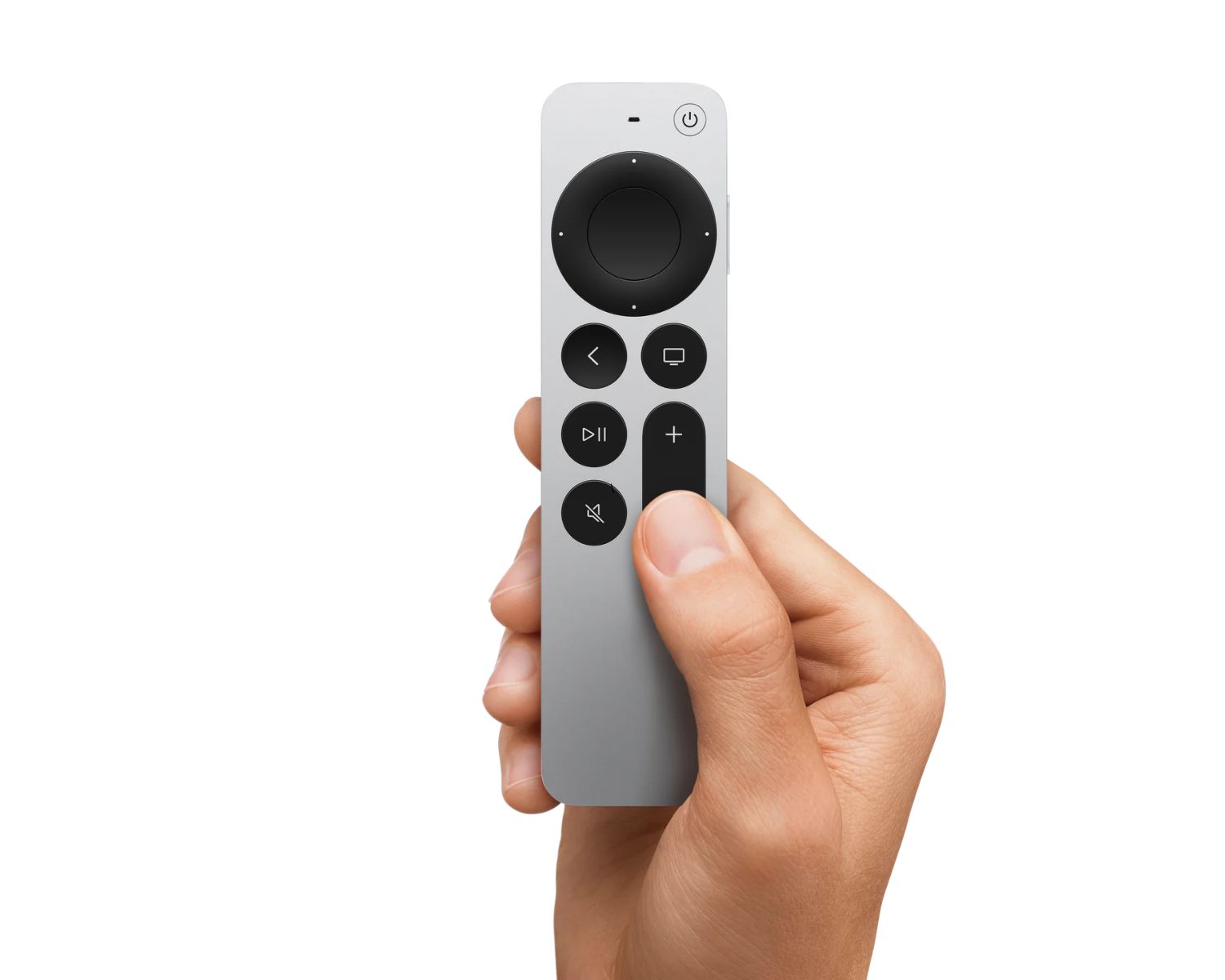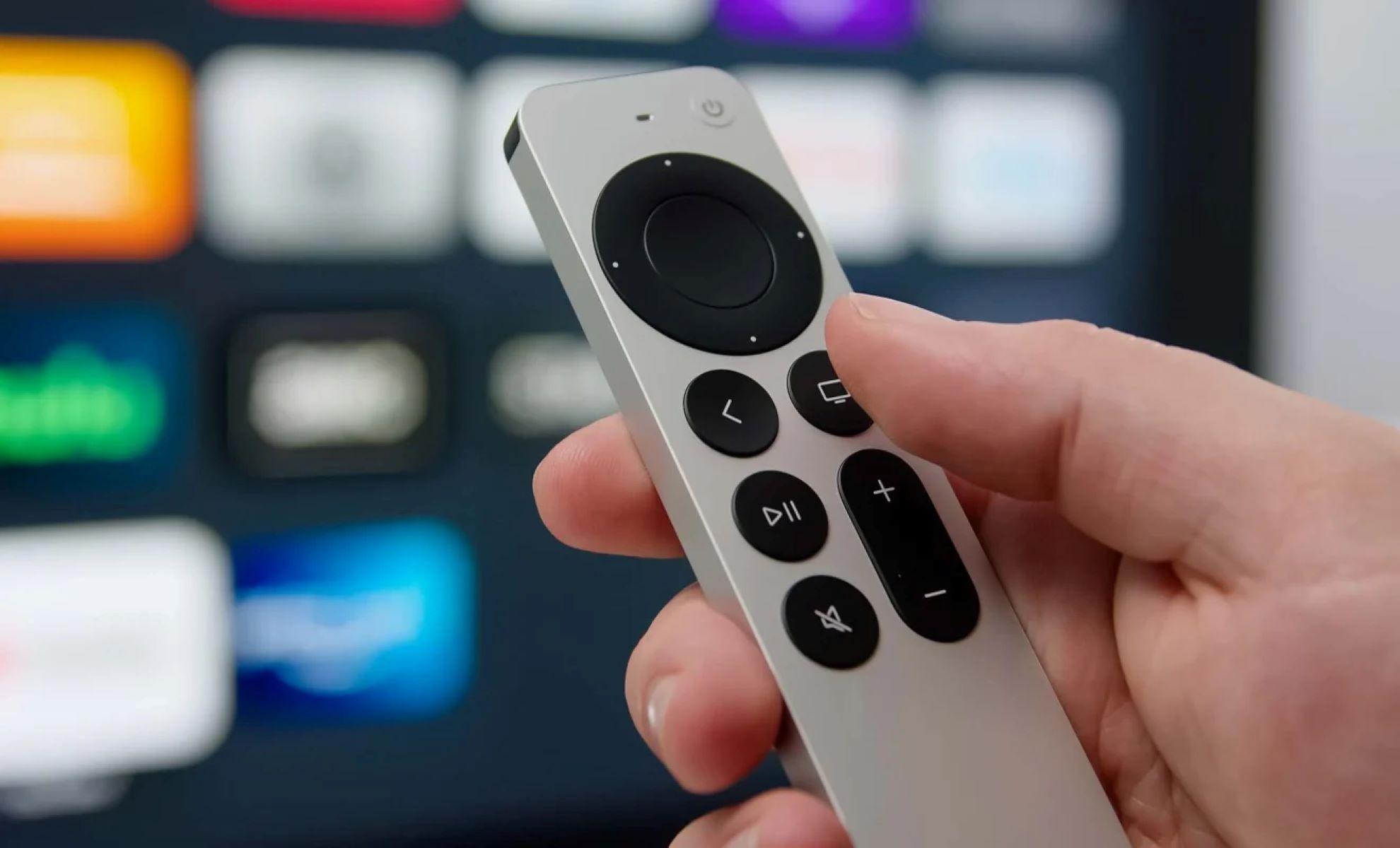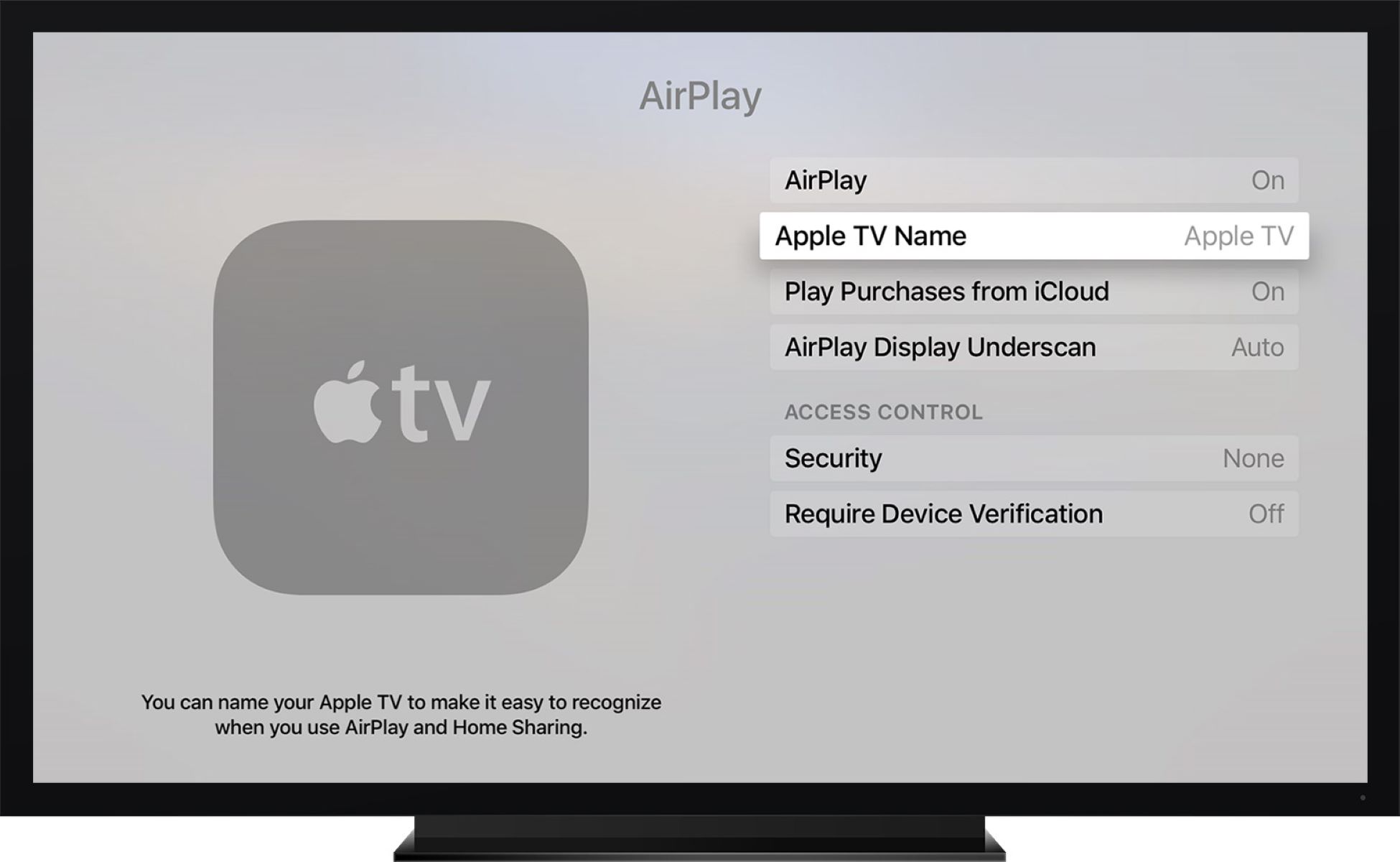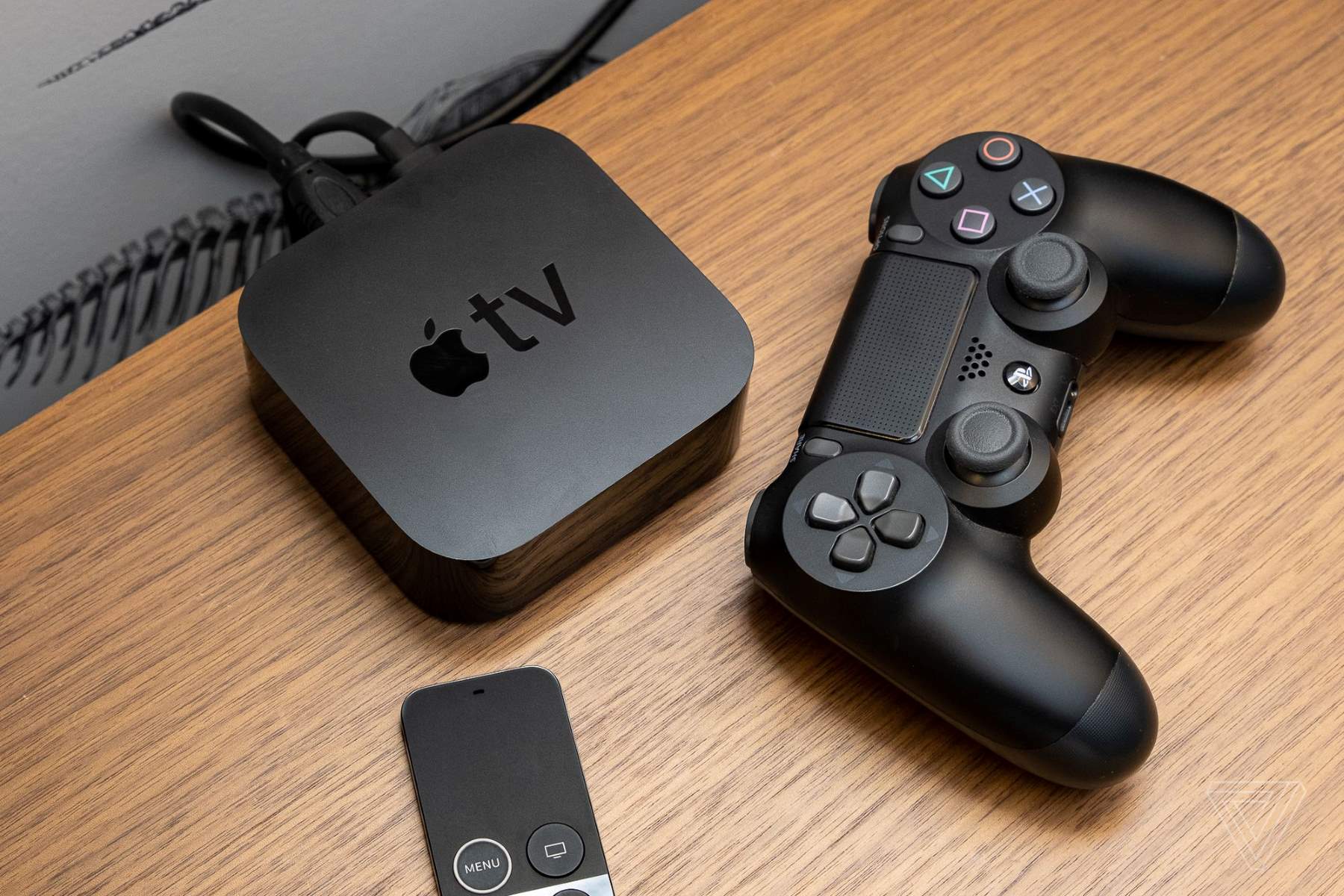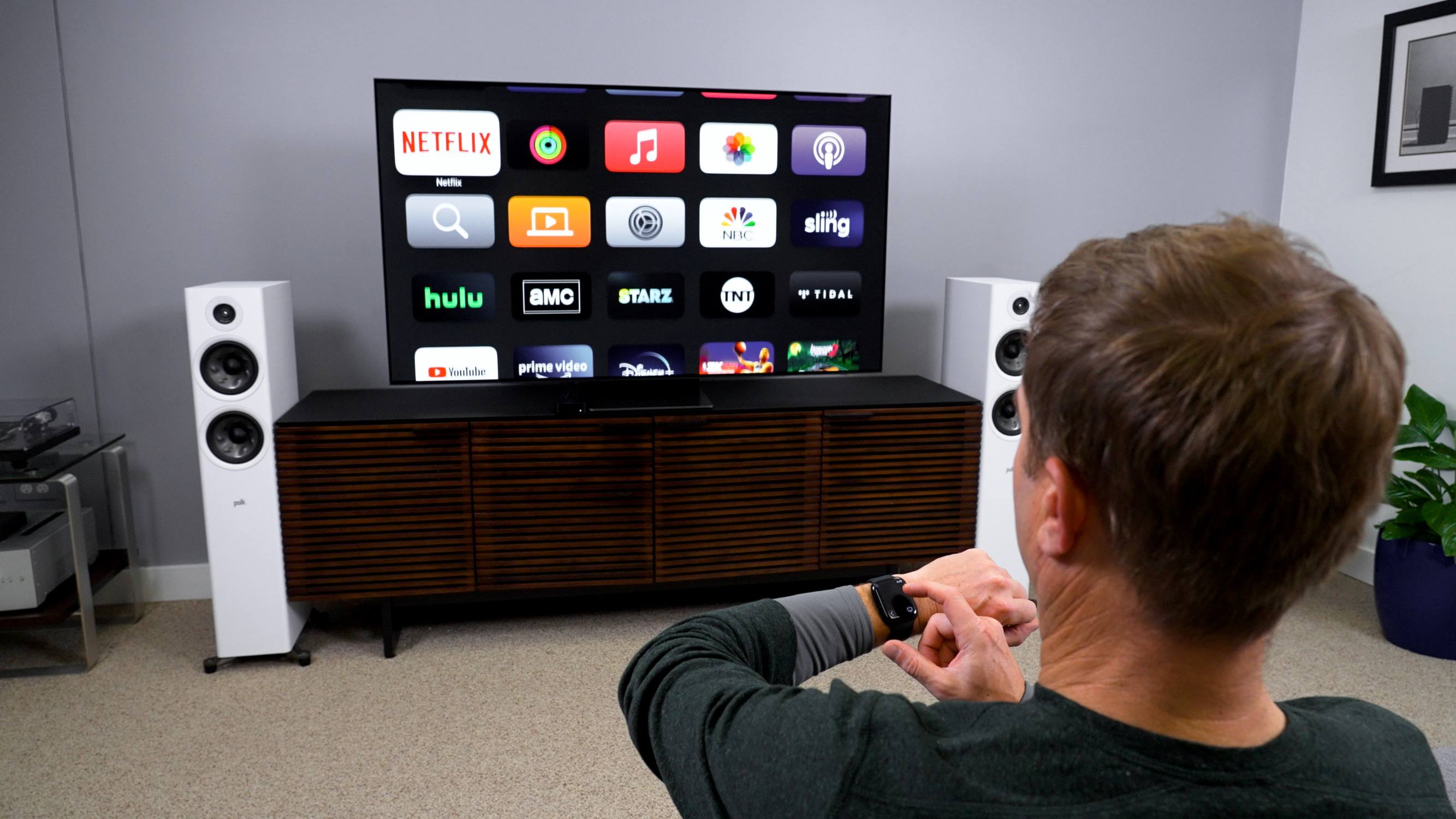Introduction
Welcome to the world of Apple TV! If you’re new to the Apple TV device, you may be wondering how to make the most out of its features. A crucial component of the Apple TV experience is the Apple TV Remote. This small but powerful device allows you to effortlessly navigate through the Apple TV interface, control your volume, and even interact with Siri.
In this guide, we will walk you through everything you need to know about using the Apple TV Remote. Whether you’re looking to connect your remote, learn how to navigate the interface seamlessly, or personalize your remote settings, we’ve got you covered. So, let’s dive in and discover the magic of the Apple TV Remote!
But first, let’s briefly touch on how the Apple TV Remote connects to your Apple TV. The remote uses Bluetooth technology to establish a connection with your Apple TV, ensuring a reliable and responsive experience. Once paired, you’ll have full control over your entertainment system, making it easier than ever to enjoy your favorite TV shows, movies, and apps.
Now that you have a general understanding, let’s delve into the specifics of using the Apple TV Remote. From navigating the user interface to utilizing advanced features like Siri and controlling external devices, we’ll guide you step by step.
So, get ready to take your Apple TV experience to the next level as we explore the ins and outs of the Apple TV Remote. Let’s begin!
Connecting the Apple TV Remote
Before you can start using the Apple TV Remote, you need to connect it to your Apple TV. The process is simple and straightforward, so let’s get started:
1. Ensure that your Apple TV is powered on and set up correctly.
2. On the Apple TV interface, go to the “Settings” option and select “Remotes and Devices.”
3. Choose “Bluetooth” and make sure it is enabled on your Apple TV.
4. Press and hold the “Menu” and “Volume Up” buttons simultaneously on your Apple TV Remote until the LED light on the front of the remote starts blinking rapidly.
5. Wait for your Apple TV to detect the remote. Once it does, a confirmation message will appear on the screen.
6. Follow the on-screen prompts to complete the pairing process.
That’s it! Your Apple TV Remote is now successfully connected to your Apple TV. You can now start using it to navigate the interface and control your entertainment experience.
It’s worth noting that if you have multiple Apple TV devices in close proximity, you may need to identify and connect your remote to the correct Apple TV. This can be done by going to the “Settings” option on your Apple TV, selecting “Remotes and Devices,” and choosing the appropriate Apple TV device.
If, for any reason, you need to unpair your Apple TV Remote from your Apple TV, you can do it by going to the “Settings” option, selecting “Remotes and Devices,” and choosing the “Unpair Apple Remote” option.
Now that you have successfully connected your Apple TV Remote, let’s move on to the next section, where we will explore how to navigate the Apple TV interface.
Navigating the Apple TV Interface
Once your Apple TV Remote is connected, it’s time to dive into the exciting world of navigating the Apple TV interface. With intuitive gestures and a user-friendly design, exploring your favorite content has never been easier. Here are the key elements and gestures you need to know:
1. Home Button: Pressing the Home button once will take you to the main screen, where you can access all your apps and settings. Pressing the Home button twice quickly will bring up the app switcher, allowing you to easily switch between recently used apps.
2. Touch Surface: The touch surface on the Apple TV Remote acts as a navigation tool. Swipe left, right, up, or down to navigate through menus, apps, and options.
3. App Selection: To select an app, simply navigate to the app icon using the touch surface and press down on it.
4. Menu Button: Pressing the Menu button will take you back to the previous screen or menu within an app.
5. Search: To search for specific content, press the Search button on the Apple TV Remote, located next to the Home button. You can use Siri to search by voice or use the on-screen keyboard to type in your search queries.
6. Play/Pause: The Play/Pause button, located at the bottom of the Apple TV Remote, allows you to control playback within apps. Pressing it once will pause or play content, and holding it down will bring up additional playback options.
Additionally, you can use Siri on the Apple TV Remote to navigate and control your Apple TV experience. Simply press and hold the Siri button and speak your command. For example, you can say “Open Netflix” or “Show me action movies” to quickly access your desired content.
Remember, the Apple TV interface is designed to be visually appealing and easy to use. Take some time to explore the different menus, settings, and customization options to personalize your Apple TV experience.
Now that you’re familiar with navigating the Apple TV interface, let’s move on to the next section where we will discover how to make the most out of Siri on the Apple TV Remote.
Using Siri on the Apple TV Remote
Siri, the intelligent virtual assistant, is built right into the Apple TV Remote, giving you the power to navigate, search, and control your Apple TV experience using just your voice. Here’s how you can harness the full potential of Siri on the Apple TV Remote:
1. Activate Siri: To activate Siri, simply press and hold the Siri button located on the right side of the Apple TV Remote. You will see a Siri icon appear on the screen, indicating that Siri is ready to listen to your command.
2. Commands and Queries: Speak naturally into the Apple TV Remote and ask Siri to perform specific tasks or search for content. For example, you can say “Find comedies” or “Open YouTube app” to quickly access what you’re looking for.
3. Playback Control: Siri allows you to control playback using voice commands. Try saying “Pause,” “Play,” or “Skip forward 10 seconds” to effortlessly control your media playback.
4. Information and Facts: Siri can provide you with information and answer questions. You can ask Siri about the weather, sports scores, movie details, and more. Just speak your query, and Siri will provide you with the relevant information on the screen.
5. Smart Home Integration: If you have a smart home setup, Siri can act as a hub for controlling your smart devices. Connect your compatible devices to your Apple TV, and use Siri commands to control your lights, thermostats, and more.
Siri on the Apple TV Remote is designed to make your Apple TV experience more seamless and convenient. Its voice recognition capabilities and integration with popular apps and services allow you to accomplish tasks without lifting a finger.
Now that you’re familiar with using Siri on the Apple TV Remote, let’s move on to the next section, where we will explore how to adjust volume and power with the Apple TV Remote.
Adjusting Volume and Power
The Apple TV Remote not only allows you to control your Apple TV device but also provides convenience in adjusting the volume and power of your television or home entertainment system. Here’s how you can take control:
1. Adjusting Volume: To adjust the volume, simply use the volume up and volume down buttons on the Apple TV Remote. Press the volume up button to increase the volume, and press the volume down button to decrease it. Each press will incrementally adjust the volume level.
2. Mute Function: To mute the audio, press the volume down button until the volume is at the lowest level. Alternatively, you can press the volume up and volume down buttons simultaneously to instantly mute the sound.
3. Power Control: The Apple TV Remote also allows you to control the power of your television or receiver. By pressing and holding the Home button, you can put your television or receiver to sleep or wake it up. This eliminates the need for an additional remote to control the power of your entertainment system.
4. IR Capabilities: If you have an older television or receiver that does not support HDMI-CEC, the Apple TV Remote can still control the power and volume by using Infrared (IR) signals. Simply point the Apple TV Remote towards your television or receiver and ensure it has a clear line of sight. The IR transmitter on the Apple TV Remote will send the necessary signals to control the power and volume of your devices.
With the ability to adjust volume and control power, the Apple TV Remote offers a seamless and integrated experience, so you can enjoy your favorite content without juggling multiple remotes.
Now that you know how to adjust volume and power using the Apple TV Remote, let’s move on to the next section, where we will discover how to control external devices with the remote.
Controlling External Devices with the Apple TV Remote
The Apple TV Remote is not limited to controlling just your Apple TV device; it can also be used to control other external devices connected to your television or home entertainment system. This allows you to streamline your remote control experience and eliminate the need for multiple remotes. Here’s how you can take advantage of this feature:
1. HDMI-CEC Compatibility: Many modern televisions and devices support HDMI-CEC (Consumer Electronics Control), a feature that allows devices connected via HDMI to control each other. If your television and external devices support HDMI-CEC, you can use the Apple TV Remote to control their functionality seamlessly.
2. Control via HDMI-CEC: After connecting your Apple TV to your television and enabling HDMI-CEC in the settings, the Apple TV Remote can control the power, volume, and other functionalities of compatible devices. For example, you can use the Apple TV Remote to adjust the volume of your soundbar or switch inputs on your receiver.
3. Learn Remote: If your external devices do not support HDMI-CEC or are not compatible, you can still teach the Apple TV Remote to control them. Simply go to the Apple TV settings, select “Remotes and Devices,” and choose “Learn Remote.” Follow the on-screen instructions to teach your Apple TV Remote the commands for your external devices.
By consolidating control of your Apple TV and external devices into one remote, you can simplify your entertainment setup and enjoy a more streamlined experience. Say goodbye to the clutter of multiple remote controls!
Now that you know how to control external devices with the Apple TV Remote, let’s move on to the next section, where we will explore how to customize the settings of your Apple TV Remote.
Customizing the Apple TV Remote Settings
The Apple TV Remote offers a range of customizable settings that allow you to tailor the remote to your preferences and enhance your overall user experience. Here are some of the key settings you can customize:
1. Touch Surface Sensitivity: You can adjust the sensitivity of the touch surface on the Apple TV Remote to suit your preferred level of responsiveness. Go to the Apple TV settings, select “Remotes and Devices,” and choose “Touch Surface Tracking.” From there, you can select the desired touch surface sensitivity level.
2. Home Button Behavior: Customize the behavior of the Home button on the Apple TV Remote. You can choose whether a single press of the Home button takes you to the main screen or activates the app switcher. Go to the Apple TV settings, select “Remotes and Devices,” and choose “Home Button.”
3. Sleep Function: The Apple TV Remote can automatically put your television or receiver to sleep when not in use. To enable this feature, go to the Apple TV settings, select “Remotes and Devices,” and choose “Sleep.”
4. Accessibility Options: Apple TV provides various accessibility options to cater to different user needs. You can customize features such as closed captions, audio descriptions, and more. Navigate to the Apple TV settings, select “General,” and choose “Accessibility.”
5. Resetting the Remote: If you encounter any issues with your Apple TV Remote or want to start fresh, you have the option to reset it to factory settings. To do this, go to the Apple TV settings, select “Remotes and Devices,” and choose “Reset.”
By customizing these settings, you can optimize the Apple TV Remote to your liking, ensuring a personalized and enjoyable user experience. Explore the options available and tailor your remote to fit your needs.
Now that you know how to customize the settings of your Apple TV Remote, let’s move on to the next section, where we will troubleshoot common issues that you may encounter with the remote.
Troubleshooting Common Issues with the Apple TV Remote
While the Apple TV Remote is designed to provide a seamless and intuitive user experience, you may encounter some common issues along the way. Here are some troubleshooting tips to help you address these issues:
1. Unresponsive Remote: If the Apple TV Remote does not respond or is unresponsive, start by checking the battery level. Replace the batteries if necessary. If the issue persists, try unpairing and then re-pairing the remote with your Apple TV. Go to the Apple TV settings, select “Remotes and Devices,” and choose “Unpair Apple Remote.”
2. Connection Issues: If your Apple TV Remote is having trouble connecting to your Apple TV, ensure that your Apple TV and remote are within range and that there are no obstructions between them. Additionally, make sure your remote is not connected to any other Apple TV devices nearby. Restarting your Apple TV and remote can also help resolve connection issues.
3. Infrared Control: If you have an older television or device that requires Infrared (IR) control, make sure the remote is pointed directly at the device and that there is a clear line of sight. Check if the IR transmitter on the Apple TV Remote is functioning properly.
4. Software Updates: Keeping your Apple TV and remote up to date with the latest software updates can often resolve various issues. Check for software updates by going to the Apple TV settings, selecting “System,” and choosing “Software Updates.”
5. Resetting the Remote: If all else fails, you can try resetting the Apple TV Remote to factory settings. Go to the Apple TV settings, select “Remotes and Devices,” and choose “Reset.”
If you continue to experience issues with your Apple TV Remote, it may be helpful to consult the official Apple support website or contact customer support for further assistance.
By following these troubleshooting tips, you can overcome common issues and ensure that your Apple TV Remote is functioning optimally.
Now that you’re equipped with troubleshooting knowledge, let’s wrap up this guide and conclude our exploration of the Apple TV Remote.
Conclusion
Congratulations! You are now well-versed in the world of the Apple TV Remote. We have covered everything from connecting the remote to your Apple TV, navigating the interface, using Siri for voice commands, adjusting volume and power, controlling external devices, customizing settings, and troubleshooting common issues.
The Apple TV Remote offers a powerful and user-friendly experience, allowing you to effortlessly control your Apple TV, adjust volume and power, and even command Siri with just your voice. Its intuitive interface and customizable settings make it a versatile tool for enhancing your entertainment experience.
Remember to keep your Apple TV Remote up to date with the latest software updates and batteries to ensure optimal performance. If you ever encounter any issues, refer to the troubleshooting tips we covered to resolve them efficiently.
Whether you’re binge-watching your favorite shows, exploring new apps, or listening to music, the Apple TV Remote is your key to unlocking a world of entertainment possibilities.
We hope that this guide has equipped you with the knowledge and confidence to make the most out of your Apple TV Remote. Enjoy the seamless navigation, intuitive control, and personalized settings as you embark on your Apple TV journey.
Thank you for joining us on this adventure, and happy streaming!







